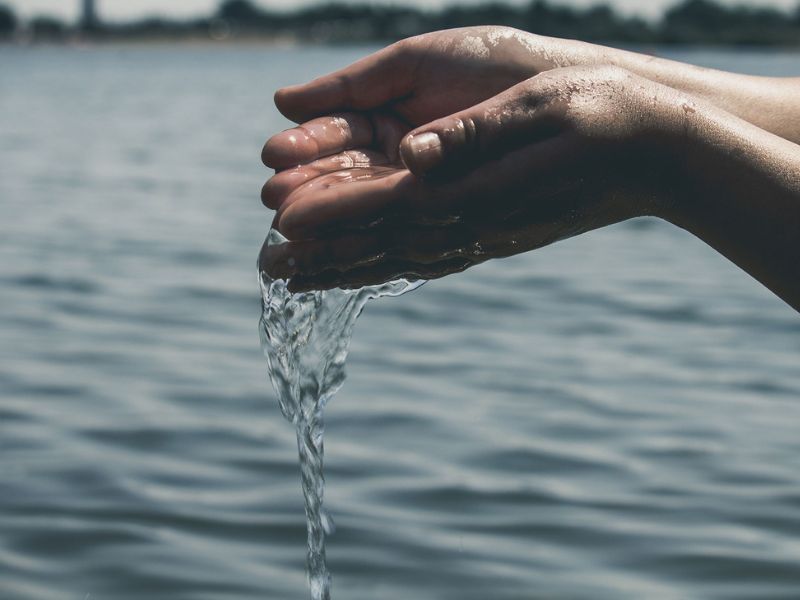Understanding the Value of Water for a Sustainable Future

- 70% of the planet is covered in water. Only 2% of this is fresh water.
- 1.6% of this freshwater is locked in polar ice caps and glaciers. This leaves about .4% fresh water for the world’s 7.9 billion people to survive on.
Do these facts about water surprise you? Water is the largest natural resource vital to human well-being and survival. We need water to stay hydrated, maintain our bodily functions, do our day-to-day activities, maintain healthy ecosystems, and keep the socio-economic sectors running.
Furthermore, water is also at the center of climate change discussions, linking the climate system, human society, and the environment. Climate change affects water accessibility, causing more severe droughts and floods, causing more and more people to gear towards water conservation.
As California residents, we’re not unfamiliar with the effects of water scarcity. We’ve experienced several droughts throughout the years, the most recent being in 2020.
The Importance of Water for a Sustainable Future
Water is a finite resource and is only renewable if well managed. With the world’s growing population where consumption exceeds natural recharge, a trend has been predicted that two-thirds of the world’s population will be living in water-stressed countries by 2025.
As an irreplaceable resource, water can pose a serious threat to sustainable development. Although, with efficient and equitable management, water can be a key player in supporting socio-economic and environmental systems despite the rapid and unpredictable changes.
What is Sustainable Development
The Brundtland Commission, in the document “Our Common Future,” defined sustainable development as the ability of the present generations to meet their needs without endangering the ability of future generations to meet theirs.
The basic concept is to focus on three factions of human well-being: environmental, economic, and socio-political conditions. Securing a sustainable future means securing strong measures to stimulate socio-economic development, particularly in developing countries, while ensuring the sustainability of environmental resources for future generations.
Factors Affecting Freshwater Resources
Industrialization plays a big role in the depletion of natural resources like water. The increased demand for water-intensive industries like food manufacturing is stressing the global freshwater resources. At this pace, experts have predicted that the available freshwater reserves needed for food, water, and other necessities will have a dramatic decrease of 40% by the year 2050.
Another factor that adds to the depletion of freshwater is climate change. As the world continues to warm, the ecosystems protecting vital water resources are being threatened, limiting access to them even more.
Water and Climate Change
Water is at the center of natural disasters like storms, floods, and tsunamis. As the climate changes, these natural disasters are largely known to occur more frequently. Some of these include the lengthy droughts in California and the great floods that devastated South-East Asia last year. Although, it is uncertain how this global phenomenon will affect rainfall patterns.
Water and Agriculture
70% of the world’s annual water supply goes to agriculture and food production. In this light, this sector will be the first one to feel the effects of the diminishing fresh water supply. The depletion in groundwater supplies has been recorded for years. As the water demand continues to supersede water capacity, the farmers’ income and food security is being greatly threatened.
Two ways to make the agricultural sector less water-intensive is to:
- Maintain vegetation to reduce groundwater runoff and prevent land degradation.
- Preserve wetlands as these protect freshwater from contamination and dry spells (periods of dry weather). The preservation of wetlands will also help maintain the streams and lakes that are essential for raising livestock.
Water and Everyday Lives
Did you know that average Americans use 2,000 gallons of water every day? This includes water used in the shower, for drinking, and down to what goes into making clothes. To hydrate populations and industries, cities in developing countries move 504 billion liters of water across 27,000 km every day. This results in watersheds being outstretched beyond their physical footprint.
What is a Watershed?
Watersheds are land areas that collect rainfall and snowmelt and channel them to creeks, streams, rivers, and eventually through reservoirs, bays, and the ocean. In San Diego County alone, there are a total of 11 watersheds that need to be recharged and protected in order to preserve the region’s water sustainability.
Local runoff from watersheds captured in City reservoirs accounted for about 11% of total drinking water production from 2015 to 2020.
To help alleviate this burden, governments, organizations, and private sectors are raising awareness about the diminishing global water supply. We’re all a part of the problem, and we can be a part of the solution as well.
Ways to Conserve Water at Home
In your home, conserving a little water can help a lot. Impactful facts:
- Cutting 4 minutes off your shower time can save 30 gallons of water.
- Flushing the toilet less can save about 6 gallons of water.
Water and Sustainable Future
In light of all this, failure to address this global concern of unsustainable water use right now will pose greater challenges in the future. UN’s campaign to promote water and sanitation issues showed improvement in people’s awareness of the threat of water sustainability in the future. Protecting the environment means protecting the future. Effective water management today will secure our sustainable future, not just in San Diego County but worldwide.
Tell us what water means to you and how you’re getting involved to conserve for years to come by tagging us in a post @SolanaCenter!
This article was written by Volunteer Fay Smith.
